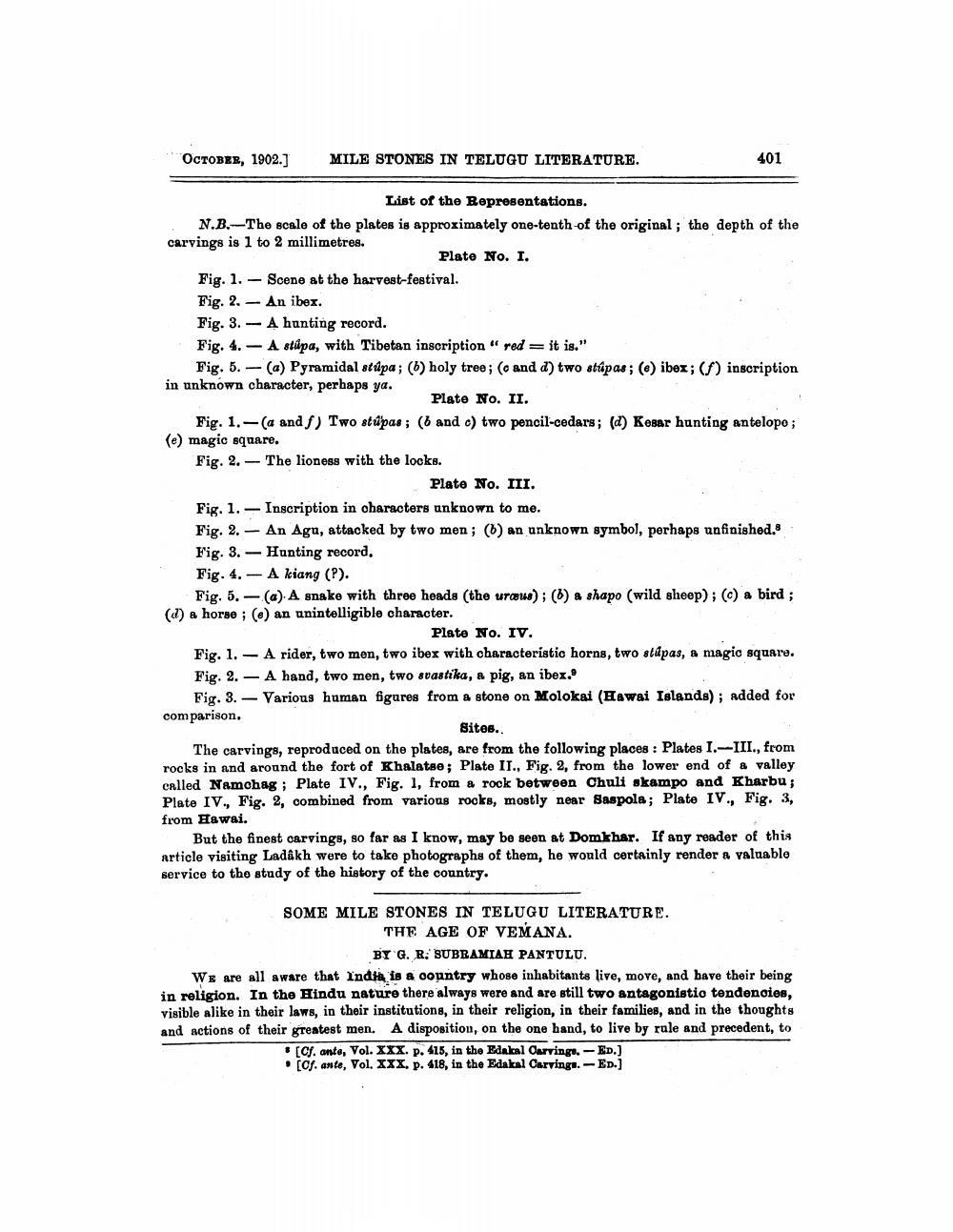________________
OCTOBER, 1902.]
MILE STONES IN TELUGU LITERATURE.
401
List of the Representations. N.B.--The scale of the plates is approximately one-tenth of the original; the depth of the carvings is 1 to 2 millimetres.
Plate No. I. Fig. 1. - Scene at the harvest-festival. Fig. 2. - An iber. Fig. 3. - A hunting record. Fig. 4. - A stúpa, with Tibetan inscription" red = it is."
Fig. 5. - (a) Pyramidal stúpa ; (6) holy tree; (cand d) two stúpas ; (e) iboz; () inscription in unknown character, perhaps ya.
Plate No. II. Fig. 1.-(a and f) Two stúpas ; (6 and c) two pencil-cedars; (d) Kesar hunting antelopo ; (e) magic square. Fig. 2. - The lioness with the locks.
Plate No. III. Fig. 1. - Inscription in characters unknown to me. Fig. 2.- An Aga, attacked by two men; (b) an unknown symbol, perhaps unfinished. Fig. 3.- Hunting record, Fig. 4. - A kiang (?).
Fig. 5.-(a). A snake with three heads (the urau); (b) a shapo (wild sheep); (c) a bird ; (d) a horse ; (@) an unintelligible character.
Plate No. IV. Fig. 1. - A rider, two men, two ibex with characteristic horns, two stūpas, a magic square. Fig. 2.- A hand, two men, two svastika, a pig, an ibex.
Fig. 3. - Various human figures from a stone on Molokai (Hawai Islands); added for comparison,
Sites. The carvings, reproduced on the plates, are from the following places : Plates I.-III., from rocks in and around the fort of Khalatae; Plate II., Fig. 2, from the lower end of a valley called Namohag ; Plate IV., Fig. 1, from a rock between Chuli skampo and Kharbu; Plate IV., Fig. 2, combined from various rocks, mostly near Saspola; Plate IV., Fig. 3, from Hawai.
But the finest carvings, so far as I know, may be seen at Domkbar. If any reader of this article visiting Ladakh were to take photographs of them, he would certainly render a valuable service to the study of the history of the country,
SOME MILE STONES IN TELUGU LITERATURE.
THE AGE OF VEMANA.
BY G. R. SUBRAMIAH PANTULU. We are all aware that India is a country whose inhabitants live, move, and have their being in religion. In the Hindu nature there always were and are still two antagonistio tendencies, visible alike in their laws, in their institutions, in their religion, in their families, and in the thoughts and actions of their greatest men. A disposition, on the one hand, to live by role and precedent, to
• [Cf. ante, Vol. XXX. p. 415, in the Edakal Carvings. -ED.) . [Cf. ante, Vol. XXX. p. 418, in the Edakal Carvings. -ED.]




